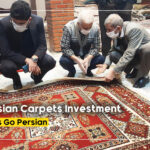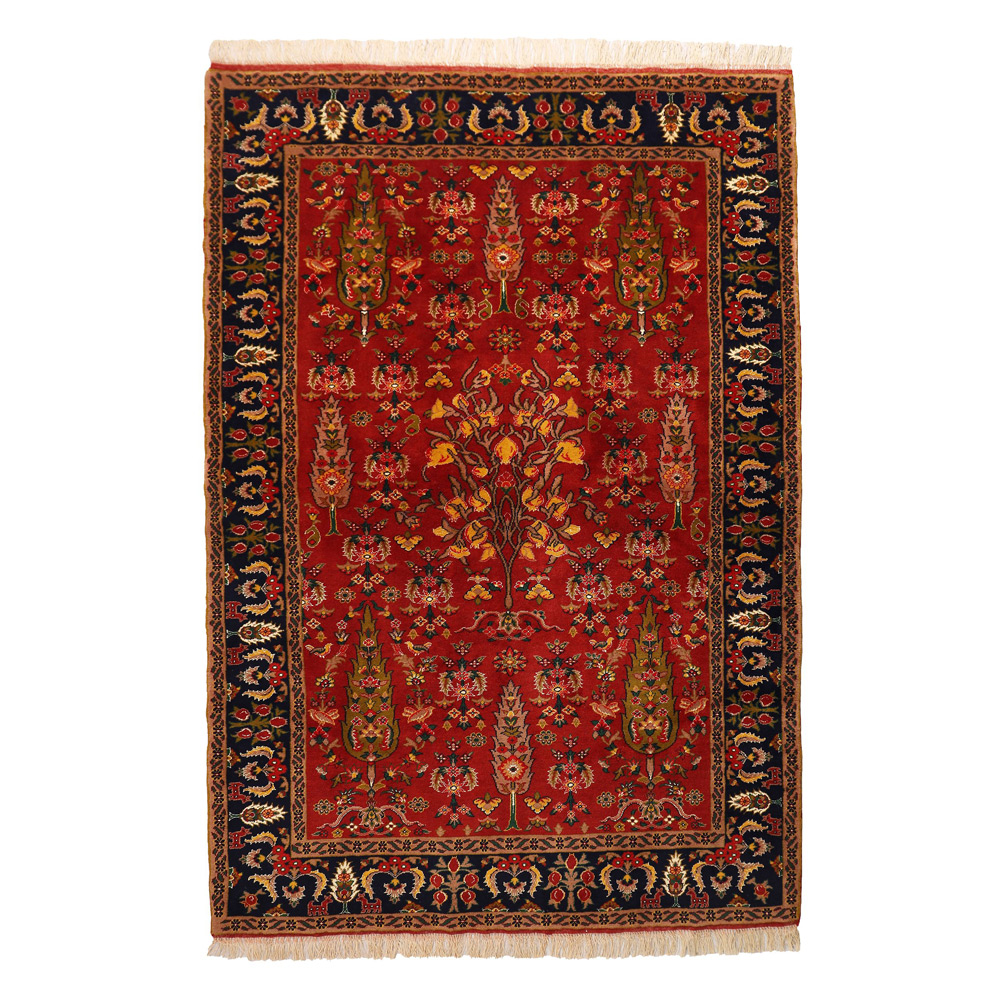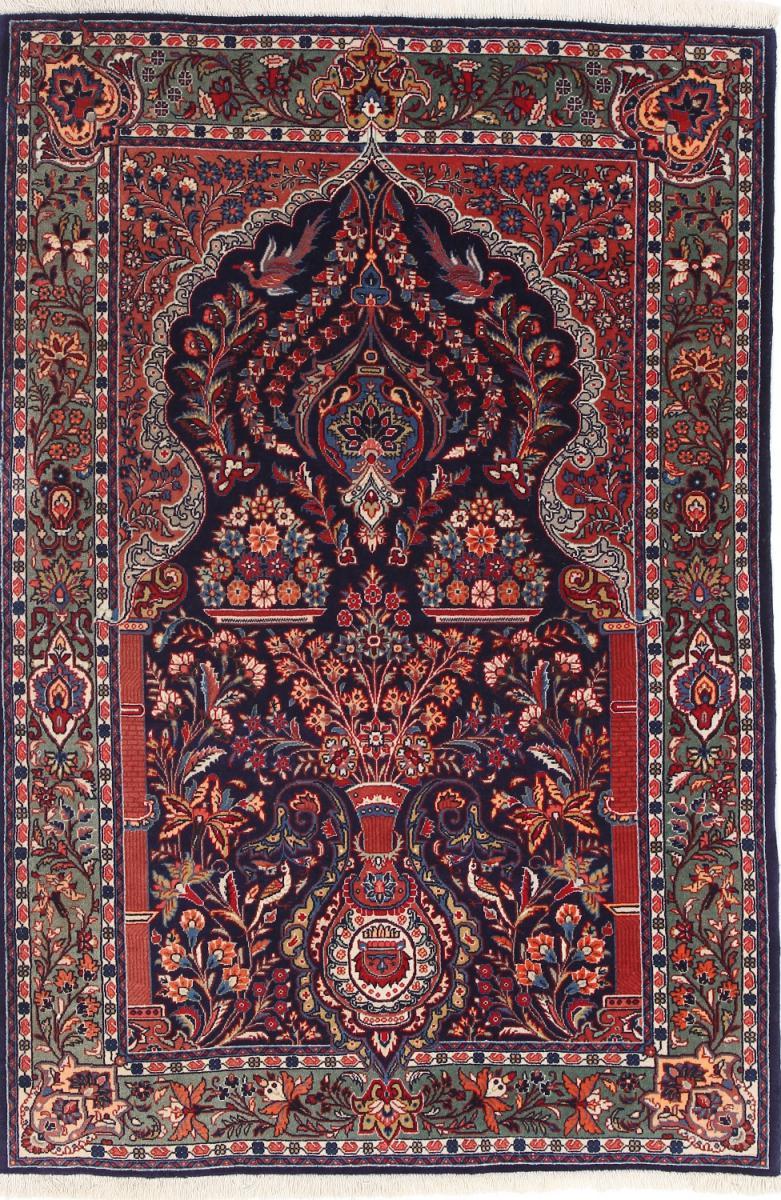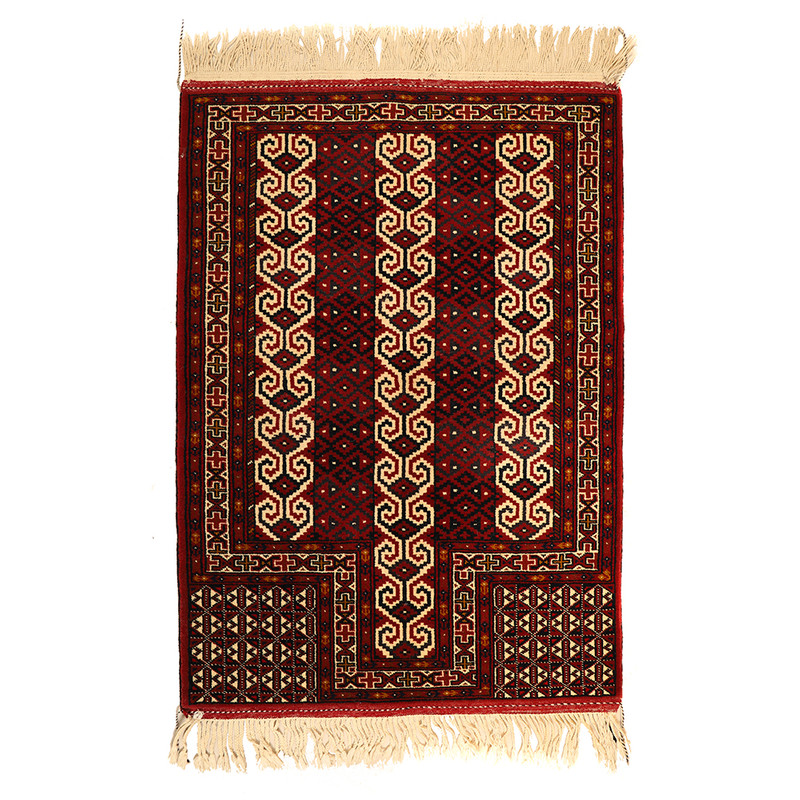
How to Distinguish an Authentic Persian Carpet from a Fake

Persian Carpets as an Artistic and Financial Investment
In Persian culture, carpets have long been more than just decorative or functional items. They are woven into the fabric of Persian identity, carrying deep cultural, artistic, and even spiritual significance. This reverence for carpets is also reflected in Persian literature and poetry, where carpets are used as powerful metaphors, symbols of beauty, status, and the natural world, and as backdrops for legendary tales. Throughout centuries, poets and writers have drawn on the imagery of carpets to convey emotions, social values, and mystical ideas. In this blog post, we will explore the symbolic role that carpets play in Persian literature and poetry, reflecting the deep connection between the craft of carpet weaving and the soul of Persian culture.

The Role of Carpets in Persian Literature and Poetry
1. Carpets as a Symbol of Luxury and Status
Carpets in Royal Courts and Literature
Carpets have historically been associated with luxury and status, especially in the context of Persian royalty. In classical Persian literature, carpets are often depicted as lavish items found in palaces and royal courts, symbolizing wealth, power, and grandeur.
- “The Carpet of Solomon”: One of the most famous references to carpets in Persian lore is the legendary Carpet of Solomon (Farsh-e Suleiman), a magical carpet that could transport King Solomon wherever he wished. This carpet was described as being richly adorned with jewels and as a symbol of Solomon’s power and divine favor.
In poetry, carpets are often used to signify the splendor of royal life. They represent not just physical luxury but also the divine right of kings and the importance of Persian artistic craftsmanship in creating symbols of power.
2. Carpets as Metaphors for the Universe and Creation
The Carpet as a Reflection of Nature and the Cosmos
In Persian poetry, carpets are frequently used as metaphors to describe the universe and the natural world. The intricate designs and patterns of Persian carpets—often inspired by gardens, flowers, and the elements—serve as symbolic representations of the order and beauty of creation. This reflects a Persian worldview that sees art and nature as intertwined.
- “The Carpet of Creation”: The renowned Persian poet Hafez (1325–1389) often drew on the metaphor of carpets to express the beauty of nature and the complexities of life. In his verses, carpets are likened to the way the universe itself is woven together, with both chaos and harmony existing side by side.
- Garden Carpets as Paradise: The famous garden carpets (Golestan or Bagh) often depicted in Persian literature represent the Garden of Eden or paradise, a central concept in Persian mysticism. Poets such as Rumi (1207–1273) have used carpets symbolically to convey the idea of the world as a lush, interconnected garden created by a divine weaver.

Garden Carpets as Paradise
Carpets as Mirrors of the Spiritual Journey
In Persian Sufi poetry, carpets are often used as metaphors for the spiritual journey or the path toward enlightenment. The complexity of the patterns on a carpet represents the intricate and often difficult journey of life, while the act of weaving symbolizes the process of creation, self-discovery, and inner reflection.
- Weaving as a Mystical Process: In the works of Attar of Nishapur, carpets are described as symbols of the spiritual layers of the soul, woven by the divine hand. The intricate knots in a Persian carpet can be seen as symbolic of the entanglements of worldly life, while the unweaving of these knots represents the Sufi path to spiritual freedom.

Weaving as a Mystical Process
3. Carpets in Persian Love Poetry
Carpets as Symbols of Beauty and Desire
Persian love poetry is renowned for its rich metaphors and imagery, and carpets frequently play a role in this context as symbols of beauty, romance, and desire. The delicate and intricate nature of Persian carpets often serves as a metaphor for the beloved, whose beauty is portrayed as intricate, flawless, and awe-inspiring.
- Delicate Craftsmanship and Beauty: Poets like Saadi (1210–1291) and Omar Khayyam (1048–1131) have used carpets as a metaphor for the beloved’s beauty, comparing the elegance of the beloved’s features to the fine threads and intricate patterns of a hand-woven rug.
- Love as a Woven Tapestry: In Persian poetry, love itself is often described as a tapestry, with each thread representing a moment of joy, pain, longing, or fulfillment. This metaphor emphasizes the complexity of love, much like the detailed designs of Persian carpets.
Carpets as Spaces for Intimate Moments
In romantic poetry, carpets are often described as the setting for intimate encounters, evoking the warmth and comfort associated with sharing love in a private, cherished space.
- The Lover’s Carpet: In love poetry, carpets are often depicted as the meeting place of lovers, where emotions and desires unfold. The softness of the carpet symbolizes the comfort and tenderness of love, while the vibrant patterns reflect the intensity of passion.
4. Carpets as Symbols of Memory and Legacy
The Weaving of Stories and Generations
In Persian literature, carpets are frequently used as symbols of memory, heritage, and legacy. Carpets passed down through generations are often seen as tangible links to the past, representing the stories, history, and culture of the people who crafted and owned them.
- Carpet as a Record of History: Just as each knot in a Persian carpet represents an individual action or moment in time, Persian literature often uses the carpet as a metaphor for the weaving of personal and cultural histories. The process of weaving is likened to the passage of time and the accumulation of memories and experiences.
Carpets as Cultural Identity
For many Persian writers, carpets symbolize Iranian identity and the continuity of traditions across generations. Persian carpets are a proud expression of the nation’s artistic achievements and cultural heritage, and they often appear in literary works as emblems of Iran’s deep-rooted history.
- Symbol of Cultural Pride: Poets and authors have referenced carpets as representations of the continuity and survival of Persian culture, even in times of political upheaval or foreign influence. The carpet, with its timeless design and artistry, serves as a reminder of the enduring strength of Persian cultural values.
5. Carpets as Sacred Objects in Religious and Spiritual Texts
Carpets as Prayer Mats
In Islamic culture, carpets often serve as prayer mats (Jānamāz) and are seen as sacred spaces. This role is reflected in Persian religious and spiritual literature, where carpets are described as places of spiritual purity, used for prayer and meditation.
- Symbol of Divine Connection: In Sufi literature, the prayer mat becomes a symbol of the soul’s connection with the divine. The act of kneeling on a beautifully woven carpet during prayer is described as an opportunity for believers to feel grounded in their faith while surrounded by artistic representations of divine creation.

prayer mats
Carpets in Mystical Visions
Carpets in Persian mystical poetry often serve as vehicles for spiritual visions and enlightenment. In some poems, the carpet is portrayed as a mystical object that transports the soul toward greater understanding and divine truths.
- The Carpet as a Symbol of Mystical Elevation: Carpets in such texts are more than just worldly possessions—they represent spiritual ascension. Just as a weaver spins threads into a beautiful tapestry, the spiritual seeker weaves his or her life into a divine connection with the universe.
Conclusion
Carpets occupy a prominent and symbolic role in Persian literature and poetry, representing everything from luxury and status to love, spirituality, and cultural heritage. As reflections of Persian life and identity, carpets are woven into the very fabric of the nation’s literary traditions. Whether used as metaphors for the universe or as symbols of intimate connection, the enduring presence of carpets in Persian poetry speaks to their significance in Persian culture, history, and spirituality. Through carpets, Persian poets have been able to convey complex emotions, ideas, and worldviews, ensuring that these beautiful textiles remain a timeless source of inspiration and meaning.



















